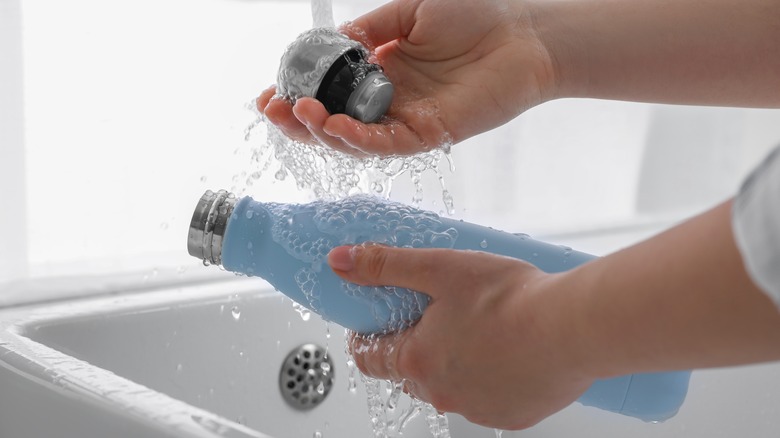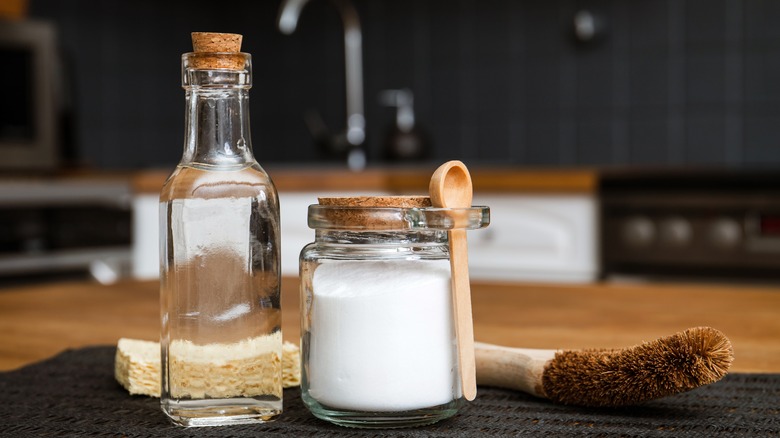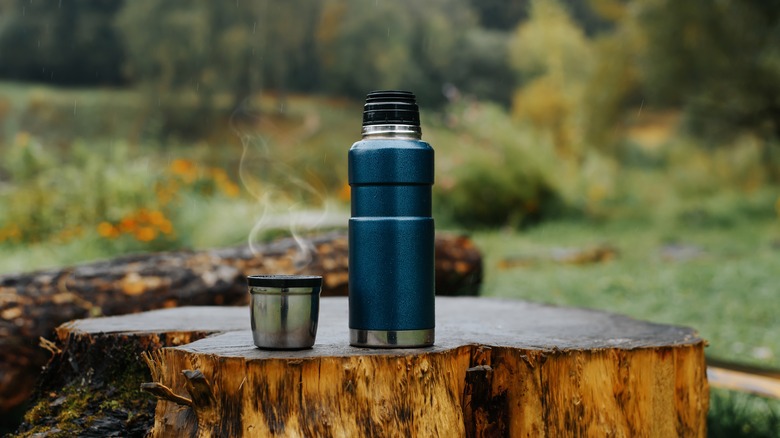Why You Should Never Clean A Thermos With Boiling Water
Chances are that if you're using a thermos, you're trying your best to do the right thing in life. Maybe you're setting yourself up for success by preparing coffee at home or want to ensure you hit your water quota, or maybe you're trying to reduce your consumption of single-use paper, plastic, and styrofoam. Whatever the case, you'll want to make sure you're taking care of yourself and your thermos by properly cleaning it in between uses. While washing food and beverage containers with boiling water is often a good tactic for killing any dangerous bacteria, you want to avoid doing so when it comes to your thermos.
Water that has been heated to around 212 degrees Fahrenheit has the potential to melt or otherwise damage parts of the thermos, including any external design or the seal around the lid. If the vacuum seal of the thermos is compromised, its contents will not be safely insulated — no more hot soup for lunch or ice-cold beverages for your mid-morning walk.
The right way to clean your thermos
Instead of using boiling water to clean your thermos or throwing it in the dishwasher (which can have similarly detrimental effects), you can try cleaning your thermos with baking soda and white vinegar. This method is commonly used to clean many pieces of kitchen equipment and home appliances. It is cheap, easy, and does not have a harmful impact on the environment, as may be the case with some harsh chemical cleaning products that contain things like volatile organic compounds (think phosphorous or ammonia).
Grab your thermos, as well as a bottle of white vinegar, a container of baking soda, and a bottle brush. Pour a half cup of vinegar into your thermos. Cap the bottle and shake it to cover the inside with the liquid and let sit for a few minutes. Additionally (or alternatively), you can mix a few tablespoons of baking soda with water and gently scrub the interior of the thermos with your bottle brush. Afterward, rinse it thoroughly with warm water.
Why you need to take good care of your thermos
By using a thermos, you can slowly enjoy hot and cold foods or drinks over the course of several hours — while also cutting down on your consumption of single-use styrofoam and plastic-lined paper cups, which have a negative impact on our planet. To avoid any potential food safety issues and to keep your thermos out of a landfill for many years to come, you'll need to protect its ability to properly insulate its contents.
Whether you use your thermos for transporting restorative soups in the winter or your ideal brew thanks to your home coffee roasting hobby, you want to keep the liquids inside at a safe (and enjoyable) temperature. A thermos is built to prevent the transfer of heat between the narrow space within its walls and the world outside, but it can only continue doing so over a long time if it's taken care of, which means washing your thermos carefully (without boiling water).



